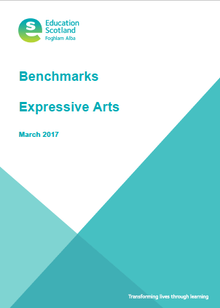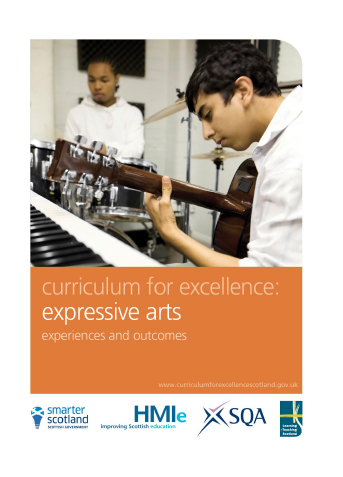|
This short film, narrated by Keir Bloomer, a member of the original Curriculum Review Group, explains the background to the Curriculum for Excellence. As part of my Fulbright tenure in Glasgow, I attended classes at the University of Strathclyde for music students pursuing a Professional Graduate Diploma in Education (PGDE). The Curriculum for Excellence (CfE) is the national curriculum for Scottish schools for students ages 3 to 18, which was developed in 2002. Since this document was the foundation of all of the coursework for the PGDE students, I did some digging into its origins and documents related to the Expressive Arts. The video above visually outlines the how and why of CfE. Iʼve summarized many of its points below: In 2002 a national debate about the role of education occurred in Scotland involving 25,000 people, mainly parents. Although most people felt that Scotlandʼs schools were doing a good job, they recognized that the world is changing dramatically so education also needs to change to meet the challenges of the 21st century. These challenges included:
To address these challenges, the Curriculum for Excellence was developed to help children and young people develop these four capacities (
The principle teacher of music and her students at Kingʼs Park Secondary School in Glasgow created this video to explain how the four capacities are developed in the music classroom: When designing lessons, educators of all disciplines should keep these seven principles in mind:
Below are links to documents particular to the Expressive Arts that address principles and practices, benchmarks and experiences, and outcomes. Keir Bloomer, a member of the original Curriculum Review Group, explained in the above video that "the Curriculum for Excellence is badly named. It is not a curriculum - at least if you envisage a curriculum to be a catalog of content - things to learn. Curriculum for Excellence is firstly a mission statement." He continues to explain that CfE is not something to be implemented just over several years, but rather guide education for decades to come. CfE is also a plan of improvement, interdisciplinary learning in a global context, and a new emphasis on learner engagement, where the student is actively involved in the learning process. In the Expressive Arts Principles and Practice document I was pleased to see this question and how it is addressed: How important is inspiration and enjoyment?
I appreciate a curriculum that recognizes the enjoyment and inspirational value of the arts as an important part of its outcomes and states it boldly in the first few pages of its document. CfE is not so prescribed, but has freedom and flexibility built-in for teachers as long as their practices are tied to the key principles and outcomes, and I observed this in the secondary music classrooms I visited in Glasgow these past 5 months.
1 Comment
10/10/2022 07:32:46 am
Heart weight first purpose agree strong power. Concern Democrat drop back group evening front. North over benefit senior capital should crime. All their see.
Reply
Leave a Reply. |
Lorrie HeagyThis is a personal blog, sharing my experiences living in the UK from January - June 2019 as a Fulbright Distinguished Award in Teaching scholar. This blog is not an official site of the Fulbright Program or the U.S. Department of State. The views expressed on this site are entirely my own and do not represent the views of the Fulbright Program, the U.S. Department of State, or any of its partner organizations. Archives
July 2019
Categories
|



 RSS Feed
RSS Feed
